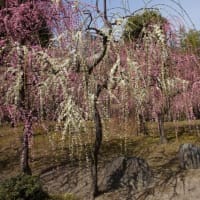The following is from an article by Yoshiko Sakurai that appeared on the front page of the Sankei Shimbun on April 15.
This article also proves that she is a "national treasure" as defined by Saicho and a supreme national treasure.
The key to decarbonization is the use of nuclear power.
On April 12, as Prime Minister Yoshihide Suga's visit to the United States was approaching, it reported that John Kerry, the U.S. special envoy to the president on climate change, was expected to visit China.
In fact, on April 2, when the summit between Prime Minister Suga and President Biden was suddenly postponed for a week, there was speculation that Mr. Kerry would visit China before the Japan-U.S. summit to coordinate the U.S.-China efforts on climate change issues.
The news that Kerry will visit China this week, though not finalized, suggests that the speculation was probably correct.
Kerry's Chinese counterpart, Special Envoy for Climate Change Xie Zhenhua, was the head of China's climate change team from 2007 to 2018.
He had already retired from the front line but was recalled because no one was better suited to the job.
Both Mr. Kelly and Mr. Xie are deeply knowledgeable on the issue of climate change.
They are experienced veterans.
Climate change is epic use diplomacy of industrial competitiveness and a battle for economic security.
In Japan, this battle for the nation's fate will be fought by Shinjiro Koizumi, Minister of Environment.
Mr. Kerry is in frequent contact with Mr. Xie.
It is safe to say that the strategies of the U.S. and China are being coordinated on the so-called carbon-neutral policy.
Is Japan safe in the midst of the U.S. and China?
Mr. Koizumi is leaning toward a drastic reduction of greenhouse gas emissions and an emphasis on renewable energy.
It is no secret that he has followed the lead of the U.S. in enacting legislation to go one step further toward achieving 50 years of carbon neutrality.
Even if the international community appreciates Japan's firm statement of determination, it does not mean much.
Countries will use all kinds of strategic tactics while watching each other's movements.
If binding Japan by law narrows the range of strategic and tactical adjustments, Japan will only drive itself into a corner.
The next ten years to 30 years and the next 20 years to 50 years will not be straight.
Needless to say, it will be necessary to play the game while protecting domestic industry and national interests.
I wonder if Mr. Koizumi understands this point.
Ugly Changes in the Shape of Japan
Koizumi's father, former Prime Minister Junichiro, has said that Japan can supply all of its power needs with renewable energy (Tokyo Shimbun, May 13, 2018).
Shinjiro says he wants to double the share of renewable energy in the country's power supply mix by 30 years from the current target.
The current target is 22% to 24%, so doubling it would bring the ratio to 44% to 48%.
Shinjiro also said that he would reduce dependence on nuclear power as much as possible.
Let's evaluate this policy in the context of reality.
On April 12, the Energy Issues Study Group (chaired by Tadashi Narabayashi, special-appointment professor at the Tokyo Institute of Technology) of the think tank National Institute for Basic Research released its policy recommendations.
One of the points made in the report is that Japan is already the world leader in solar power generation.
Currently, China has the world's most extensive installed base of solar power systems at 205 gigawatts (G.W.).
The United States follows this with 62.3 GW, Japan with 61.8 GW, and Germany with 49 G.W.
Japan and the U.S. are almost neck-and-neck.
Suppose the above figures are divided by land area and converted into solar power generation systems installed per square kilometer.
The result is 0.164 kilowatts for Japan, 0.021 for China, and 0.007 for the United States.
In terms of the amount per square kilometer, Japan is eight times larger than China and 23 times larger than the United States.
Japan is at the forefront of solar power generation per square kilometer of land area, despite its small size and flat land.
Some people say that Japan is lagging in renewable energy, but they are wrong.
We are already doing enough.
The National Institute for Basic Research surveyed to determine what measures are needed to achieve Junichiro's goal of supplying all power sources with renewable energy.
Let's assume that Japan's heat consumption energy is covered by solar and wind power.
For solar power, it must cover one-third of the total area of Honshu with solar panels.
In the case of wind power, wind turbines would have to be installed in almost all of Japan's exclusive economic zone.
Green mountains, forests, and plains will disappear from the land of Japan and be covered with solar panels.
It will erect wind turbines in every corner of our oceans, which are the sixth-largest in the world.
It will destroy nature, it will spoil the landscape, and it will drastically change the environment.
It will transform our homeland in every corner of the country.
I wonder if the Japanese people will support a plan that will change the face of Japan in such an ugly way.
The idea of using renewable energy to provide 100% of the power supply is itself an illusion.
There is one more interesting fact.
The four major solar power countries mentioned above, China, the U.S., Japan, and Germany, all have very high CO₂ emission factors.
A CO₂ emission factor is a number that indicates how much C0₂ is emitted to produce 1 kilowatt/h of electricity.
The world's largest solar power producer, China, emits 720 grams of C0₂ to produce 1 kilowatt/h of electricity.
The United States follows with 440 grams, Japan with 540 grams, and Germany with 472 grams.
It is a figure comparable to Russia.
Norway tops the list of countries with the lowest C0₂ emissions during power generation at 13 grams, followed by Switzerland at 42 grams, Sweden at 46 grams, and France at 70 grams.
100% domestically produced
The following are some of the reasons why solar power-producing countries emit large amounts of C0₂ during power generation.
As we all know, renewable energy depends on the weather, so it is impossible to generate power 24 hours a day.
When the sun goes down, and solar-derived power generation suddenly drops drastically or goes to zero, we need to make up for it quickly and without delay, or we will be in serious trouble.
Thermal power is often used as a supplementary power source in such cases.
It is no wonder that the significant solar power-producing countries continue to have the worst C0₂ emission factors globally.
In contrast, the low C0₂ emissions in countries such as Norway and France result from the use of hydropower and nuclear power.
It should be a big hint for Japan.
If we think rationally, we can see that nuclear power is necessary for the success of the decarbonization policy.
That is why the world is moving toward the use of nuclear power.
Japan should do the same.
Energy policy is the very foundation of a nation.
If we make a mistake here, it will significantly diminish our national strength.
In Japan, trust in nuclear power plants was severely damaged after the March 11 disaster, but safety measures have been greatly strengthened over the past decade.
In its latest report, the International Energy Agency (IEA) clearly stated that nuclear power is the cheapest and most stable power source in Japan.
The use of nuclear power will also support Japan's technological and industrial strength.
Most of the technologies related to renewable energy are imported from overseas, while nuclear power is 100% self-sufficient in technology.
As a result, its contribution to the domestic industry is also significant.
In its policy recommendations, the National Institute for Basic Research concluded that it must promote nuclear power above all else to realize a decarbonization policy.
What do you think about this?

















